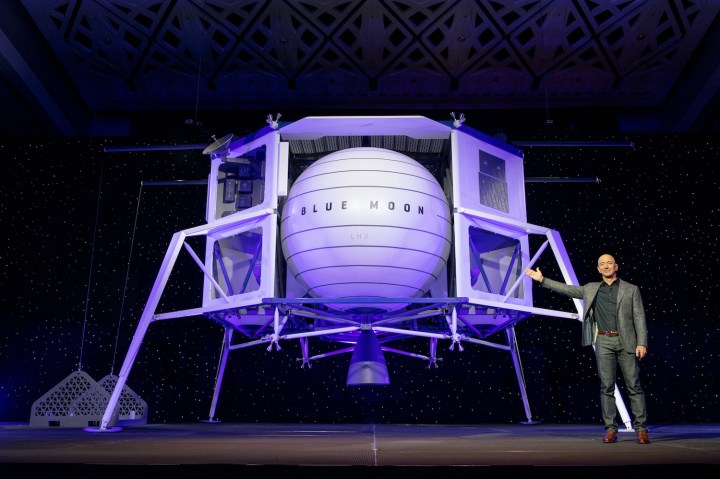
NASA partners with commercial companies to return to the moon
NASA partners with commercial companies to return to the moon

Apollo 11 gets all of the attention (particularly now, around the 50th anniversary), but in total there were six manned landings on the moon. By 1972, Jack Schmitt and Gene Cernan made the moonwalks of Apollo 17 look almost routine. When they left, Cernan made some closing remarks:
As I take man’s last step from the surface, back home for some time to come (but we believe not too long into the future), I’d like to just say what I believe history will record: That America’s challenge of today has forged man’s destiny of tomorrow.
Gene Cernan
It’s taken longer than he might have imagined, but NASA wants to go back to the moon. This time, it’s looking to commercial partners to tackle some of the challenges, like crew transport, the use of lunar resources and surviving extreme environments.
NASA lays out the plan in a video titled “We Are Going,” narrated by William Shatner, better known as Capt. James T. Kirk:
The partnerships get complicated quickly. To start, NASA recently selected 12 commercial, unmanned science projects that it’ll send to the moon through its Commercial Lunar Payload Services project. To get them there, it’ll become a customer of three different private companies — Astrobotic, Intuitive Machines and OrbitBeyond — which will build the spacecraft for moon deliveries.
“NASA is developing the plans, and they’re looking for who the best partners to execute these plans will be,” said Eric Stallmer, president of the Commercial Spaceflight Federation, a trade organization. “A lot of this work will be done with commercial companies that have the expertise in doing these things.”
Blue Origin, Amazon founder Jeff Bezos’ rocket company, also unveiled plans to take people to the moon using a flashy video (but no “Star Trek” voiceover this time, sorry).
It’s also among 11 companies selected by NASA to design a spacecraft capable of landing humans on the lunar surface, including other big names like SpaceX, Boeing, Lockheed Martin and Northrop Grumman.
“We’re making a lot of progress and a lot of headway towards getting back to the moon and beyond the moon,” Stallmer said.
Getting to the moon might not be the national priority it was during the Apollo era, but there’s plenty of renewed focus now, with the motivation that it makes good business sense.
There’s a lot happening in the world. Through it all, Marketplace is here for you.
You rely on Marketplace to break down the world’s events and tell you how it affects you in a fact-based, approachable way. We rely on your financial support to keep making that possible.
Your donation today powers the independent journalism that you rely on. For just $5/month, you can help sustain Marketplace so we can keep reporting on the things that matter to you.












